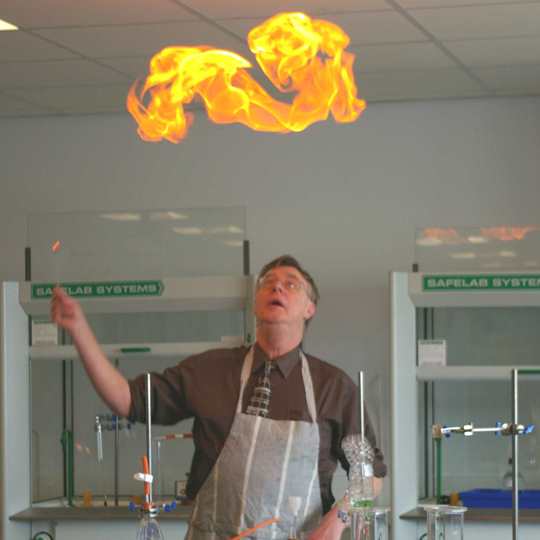Welcome to the new CLEAPSS Science Website
What is CLEAPSS
CLEAPSS resources give teachers ideas for exciting and engaging practical activities that fire pupils'
imaginations and then, unlike many other sources of ideas, go on to show teachers and technicians in
detail how to translate the ideas into safe and exciting experiences in the classroom.
CLEAPSS advice and documentation is recognised by the Health and Safety Executive and the Department for Education..
(read more)

Find Resources..
Search:
Latest news from CLEAPSS..
CLEAPSS - Technicians H&S Self Study Online Course - FREE!!!
We have developed a self-study course for technicians.
We expect this to take 2-3hrs to complete.
This is a FREE course, all you need to do is complete this registration form.
The course is made up of a series of videos and some tasks. .
CLEAPSS ECT Training
Got an NQT/ECT joining your school next term ?
Then sign them up for one of our ECT Course H&S in practical Science for early career teachers
Discover the Fascinating World of Slime Moulds with CLEAPSS
Unlock the mysteries of slime moulds with two brand new guides from CLEAPSS: GL471 Slime Mould and GL472 Activities using Slime Mould.
These comprehensive resources outline what you need to bring the study of slime moulds into the classroom.
Useful for studying behaviour and growth, GL471 offers expert insight into slime mould biology, care, and observation tips, whilst GL472 features engaging, hands-on activities designed to inspire curiosity and scientific investigation.
CLEAPSS - Teachers H&S Self Study Online Course - FREE !!!!
We have developed a new self-study course for teachers, which covers the basics of health & safety and how to manage practical work and risk assessments in lessons.
We expect this to take 2-3hrs to complete.
This is a FREE course, all you need to do is complete this registration form.
The course is made up of a series of videos and some tasks. There is an option to download / print off the PowerPoint slides used in the videos to enable users to made notes during the course.
Eye protection vs Goggles
Unsure of the differences between Goggles and Eye Protection (safety specs) ?
The read our buying guide which outlines the differences between the two.
What's new..
All new documents..
 GL-478 - Make it guide - A personal hotplate
GL-478 - Make it guide - A personal hotplate
A hotplate made from a drinks can that can be heated with a cleapss spirit burner
(15 Jul 2025)
 GL057 - Recipe Index
GL057 - Recipe Index
Index to currently published guidance on the preparation of specific solutions and other reagents. Includes a summary Contents List giving the dates of the most recent versions of recipes. Note: this .. full details
(15 Jul 2025)
 All CLP Recipe Sheets
All CLP Recipe Sheets
All-in-one pdf file of the CLP Recipe Sheets published (or updated) up to, and including, 15th November 2024.Since 16th November 2024, up to and including 23rd January 2025 a new Recipe RB119 was adde.. full details
(15 Jul 2025)
 RB124 - Leishman’s stain
RB124 - Leishman’s stain
Guidance on how to prepare Leishman’s stain. This is used for staining red and white blood cells in a blood smear.
(15 Jul 2025)
 RB108 - Methylene blue
RB108 - Methylene blue
Guidance on how to prepare methylene blue solutions for different applications. Methylene blue is used as an indicator for redox reactions e.g. respiration, and stains for cells.
(15 Jul 2025)

